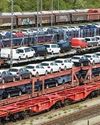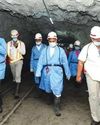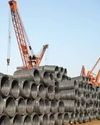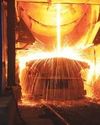
Around 30 oxygen plants located in the steel plants of both public and private sectors are supplying medical oxygen every day.
Medical oxygen supply per day from steel plants doubled to 3390 tons on April 30 from 1,500 tons on April 16.
According to sources, steel companies are keeping only half a day’s stock of Oxygen as buffer, giving away rest for medical purpose.
Prime Minister Narendra Modi on April 23, held a meeting with leading oxygen manufacturers across the country via video conferencing to provide solutions in a very short time. PM Modi stressed on the need to maintain good co-ordination between the government and the oxygen producers.
The steel sector was asked to utilise the full potential of the industry to meet the demand of oxygen in the coming days. It was noted that there is a need to increase the availability of oxygen cylinders as well as upgrade the logistics facilities for transportation of oxygen. The option of utilisation of tankers meant to transport other gases for oxygen supply was also explored.
Primary steel makers mostly use oxygen in gaseous state for steel making while a small portion is made in liquid form.
Following intervention by the Government, liquid oxygen production was augmented. To meet the crisis, even oxygen in gaseous form from steel plants and oil refineries are now being supplied.
Linde and Praxair – two major companies that collectively manage and operate several air separation and manufacturing plants of more than 2,000 tons per day capacity mostly for the steel sector - are also converting their Liquid Nitrogen and Liquid Argon tankers to augment oxygen transportation capacities.
This story is from the May 2021 edition of Steel Insights.
Start your 7-day Magzter GOLD free trial to access thousands of curated premium stories, and 9,000+ magazines and newspapers.
Already a subscriber ? Sign In
This story is from the May 2021 edition of Steel Insights.
Start your 7-day Magzter GOLD free trial to access thousands of curated premium stories, and 9,000+ magazines and newspapers.
Already a subscriber? Sign In

Steel's Net Zero mission
The country’s commitment to achieving Net Zero within a targeted timeframe will now propel its steel sector towards a sustainable future in line with global trends.

Fuel Price Hike, Supply Chain Disruption Hurt Festive Sales
Supply chain disruptions and fuel price hikes have hurt festive sales in a big way as most auto majors posted decline in sales in October.

Seaborne coking coal offers remain range-bound
Seaborne coking coal offers moved in a narrow range in October amid global supply tightness and healthy spot demand.

Global crude steel output down 8% in September
China manufactured 74 mt in September, fall of 21% y-o-y while India’s production went up by 7% to 10 mt.

MOIL embarks on expansion projects
“Even though our country is blessed with manganese ore reserves, we import 50% of the domestic requirement. We have to lower our import dependence and save precious foreign exchange.” Ram Chandra Prasad Singh, Steel Minister

Iron ore handled by major ports down 17% in H1
The 12 major Indian ports handled 27 mt of iron-ore during H1 of 2021, down by 17% from 33 mt recorded for the corresponding period of previous year.

Shrinking China output to boost India exports
“In the third quarter of 2021, the company actively responded to the pressure from external policies, such as production curtailment and dual control system on energy consumption and intensity, as well as coal resource shortage and surging prices.” Baoshan Iron and Steel Co Ltd

Indian Railways' iron-ore handling up 25% in H1
Indian Railways in April-September of 2021 (H1) transported 84 mt of iron ore, up by 25% over 67 mt during April-September 2020.

September crude steel production up 7.2% y-o-y
India’s crude steel production in September 2021 grew 7.2 percent to 9.547 million tons (mt) over September 2020 but was down by 3.2 percent from August 2021 output, provisional steel ministry data showed.

“Five enablers: way forward to sustainable cleaner steel”
Right and scalable technology, appropriate policy guidance by government, access to finance to fund transition, willingness of customers to pay for cleaner products and infrastructure for use of new technologies are the need of the hour for the sustainable and cleaner steel industry, according to Madhulika Sharma, Chief Corporate Sustainability, Tata Steel.